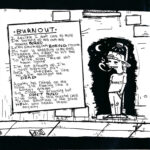The musical series Glee wasn’t just a television show; it was a cultural phenomenon that resonated deeply with audiences worldwide. At the heart of its appeal was the music – the unforgettable Glee songs that became anthems for a generation. From pop hits to Broadway classics, Glee reimagined and delivered songs that were not only entertaining but also emotionally resonant, tackling themes of love, loss, identity, and acceptance.
Iconic Glee Songs That Defined the Show
Glee was masterful at selecting songs that not only fit the narrative of each episode but also became standalone hits. Tracks like “Don’t Stop Believin'” by Journey, performed in the very first episode, instantly became synonymous with the show’s hopeful spirit. Other group numbers, such as “Somebody to Love” by Queen and “It’s My Life/Confessions Part II” mashup, showcased the vocal talents of the cast and the energy of their performances. These Glee songs weren’t just covers; they were re-interpretations that often introduced these classics to a new, younger audience. Ballads also played a crucial role, with songs like “Teenage Dream” and “The Scientist” capturing moments of vulnerability and heartbreak, solidifying their place in the hearts of viewers.
The Emotional Power of Music from Glee
Beyond catchy tunes and impressive vocals, Glee songs were powerful storytelling devices. The music amplified the emotional arcs of the characters, allowing viewers to connect with their struggles and triumphs on a deeper level. Santana Lopez, portrayed by the late Naya Rivera, delivered some of the most emotionally charged Glee songs. Her rendition of “Songbird” to Brittany, for example, was a groundbreaking moment of LGBTQ+ representation on television, showcasing vulnerability and love in a way rarely seen at the time. The Glee soundtrack became a mirror reflecting the diverse emotions of its audience, making songs about feeling like an outsider or finding your voice feel universally understood.
Glee Song Covers: Reimagining and Popularizing
One of Glee‘s signature moves was taking well-known songs and giving them a “Glee” makeover. This often involved mashups, unique arrangements, and vocal harmonies that highlighted the cast’s strengths. By covering songs across genres and decades, Glee introduced younger viewers to music they might not have otherwise discovered, from Journey to Fleetwood Mac to Queen. Conversely, the show also propelled contemporary pop songs to even greater heights of popularity. The impact of Glee song covers is undeniable; many of their versions charted on music charts globally, and continue to be enjoyed by fans years after the show concluded. The creativity extended beyond the music itself, with fans even creating alternative cover art for their favorite Glee songs, further demonstrating the deep connection and inspiration drawn from the show’s musical selections.
 Glee Cast Love Shack Cover Art
Glee Cast Love Shack Cover Art
The Lasting Legacy of Glee’s Music
Even years after Glee aired its final episode, the music remains a vibrant part of its legacy. Glee songs continue to be streamed, shared, and celebrated by fans old and new. The soundtrack serves as a time capsule, encapsulating the emotions and cultural moments of the early 2010s. More importantly, the music of Glee reminds us of the show’s core message: the power of music to connect us, to express ourselves, and to find joy even in the face of adversity. The Glee songbook is a testament to the show’s enduring appeal and its powerful impact on popular culture.

